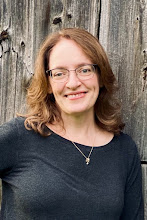Before submitting a manuscript to a publisher (or self-publishing), a manuscript can't just be good. It needs to be fantastic, AND it needs to stand out. But before it can stand out, it needs to cover the basics.
Today I'm providing a free self-edit chart focused on picture books. This will help you to cover the basics so you can perfect the craft! When I provide professional critiques, some of these very things need to be addressed before bigger issues are covered.
I first shared this self-edit chart in 2020. It's been five years, but these basics haven't changed (though my logo has). This chart focuses on picture books. It's not for short stories, middle grade, or young adult books. And if you write an expository nonfiction picture book, that won't be the same as a narrative picture book, but this can still get you started.
Interested?
Download Self-Edit Chart for Children's Writers
I also have a quick and free proofreading chart for students or writers as a printable, too.
Search online for any of the phrases you don't quite understand. Need an example? Many early writers need to remove many details to let the pictures tell more of the story. That's what "Leave room for illustrations" means.
Build on a Foundation of Knowledge
Please know this chart is just the basics. If you haven't take a lot workshops on the craft of writing for children, you may not understand some of these terms. It usually takes years of learning, working, and revising as a writer before REALLY understanding what it takes to write a solid picture book.Search online for any of the phrases you don't quite understand. Need an example? Many early writers need to remove many details to let the pictures tell more of the story. That's what "Leave room for illustrations" means.
And take classes. LOTS of classes! And just as important (maybe more!) read and study tons of recently published books in the genre you want to write. Have you thought about how other books can help you be a better writer? The best writers study mentor texts. Read all about how mentor texts can help you as a children's writer!
More Resources for Children's Writers
A few comprehensive resources for you:
Writing Picture Books by Ann Whitford Paul
Anatomy of Nonfiction by Peggy Thomas and Margery Facklam
Reimagining Your Nonfiction Picture Book by Kirsten W. Larson (my review)
5 Kinds of Nonfiction by Melissa Stewart and Marlene Correia
(affiliate links)
Be Prepared
You may have 20 (or 50) different drafts before it's ready. Many picture book authors must try a variety of styles and structures--not just a tweak here and there--to get the story right.
Some of us work on one picture book for years before it's right. Yep. And not every manuscript is worthy of publication. But I learn from all of it!
Next Steps
Before you even consider sending this to an agent or publisher (or self-publishing) make sure you get feedback from others. (I've written about the importance of critiques here and here.)
Critique partners and groups are incredibly important. (Please note, I don't mean showing your manuscript to your 10th grade English teacher.) I'm talking about feedback from professional writers. Professionals actively pursue more knowledge about the craft of writing. Ideally a critique partner also writes in your genre.
I also suggest a professional critique, especially if your writing partners are unpublished. If you're interested I provide professional critiques for children's writers. If I can't help you (because of a deadline, conflict of interest, or other situation), I can recommend others who give valuable feedback.
If you find this chart helpful, I hope you'll explore this site for more resources and subscribe so you don't miss a post. Do you know someone who might also benefit? Please share this article with them!


















No comments